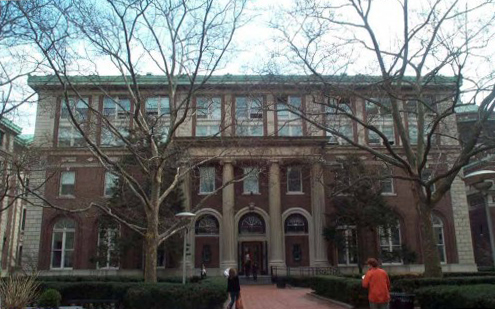1 - 3 of 3 collections
Number of results to display per page
Search Results
Parks Council records, 1920s-1979, bulk 1925-1979
23 document boxesThe Parks Council (renamed in 2002 as New Yorkers for Parks) is a non-profit advocacy organization that promotes the development, use, and maintenance of parks, playgrounds, community gardens, and open space in New York City. This collection includes office papers, correspondence, grant applications, reports, exhibitions materials, photographs, printed materials, maps, and scrapbooks related to the work and interests of the Parks Council in New York City from the 1920s through the 1970s.
1 result
Edgar Tafel architectural records and papers, 1919-2005
30 linear feetThis collection documents the life and career of Edgar Allen Tafel: New York architect, Frank Lloyd Wright historian, and one of the original apprentices of the Taliesin Fellowship from 1932. The collection primarily documents Tafel's professional activities and his later independent architectural career which was most prominent from 1965-1985. The collection is made up of nine series: Personal Papers, Correspondence, Writings, Professional Papers, Office Records, Project Records, Photographs and Slides, Audio-Visual Material, and Printed Material.
1 result
Regional Imaging & Therapeutic Radiology Center (Marshall Erdman & Associates) (Staten Island, New York), 1986 Tube 67, Roll 97
- Highlight
- Regional Imaging & Therapeutic Radiology Center (Marshall Erdman & Associates) (Staten Island, New
- Abstract Or Scope
-
40 drawings
Clyde Dorsett papers, 1940-1991, bulk 1952-1982
20 document boxesClyde H. Dorsett (1925-2007) was an architectural consultant dedicated to mental healthcare design becoming the nation's leading authority in the design and construction of such facilities. Working as lead architectural consultant for the National Institute of Mental Health (NIMH) from 1965 to 1982, he oversaw the federal government's ambitious program to transform the nation's monolithic state mental hospital structure into a wider variety of local and state facilities to address a spectrum of medical and social needs through more precisely tailored, yet humane and informal design approaches. Underpinning the work was the growing conviction that the built environment played a significant role in the healing process, and that such 'scientifically' derived design could be applied to social problems. Based at the institute's offices in Washington D.C., he both advised on individual projects through drawings submitted by architects nation-wide, as well as developing guidelines and standards for the accreditation, certification and funding of construction projects by the federal government. It is of these documents that the present collection largely comprises. He continued advising in the field long after his early retirement from the institute in 1982.
1 result
Matrix, undated Box 17, Folder 20
- Highlight
- Dorsett, Matrix for Planning & Design of Therapeutic Recreation Facilities; includes five slides of
- Abstract Or Scope
-
Dorsett, Matrix for Planning & Design of Therapeutic Recreation Facilities; includes five slides of parts of the matrix
